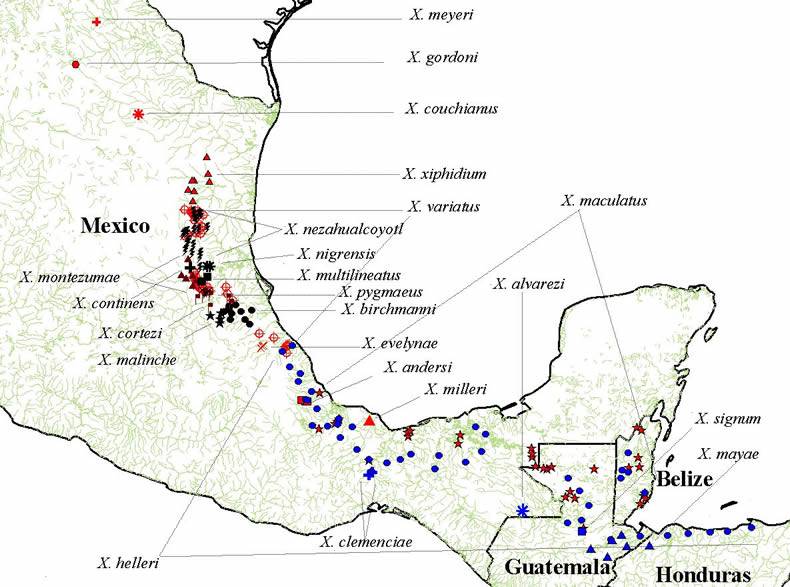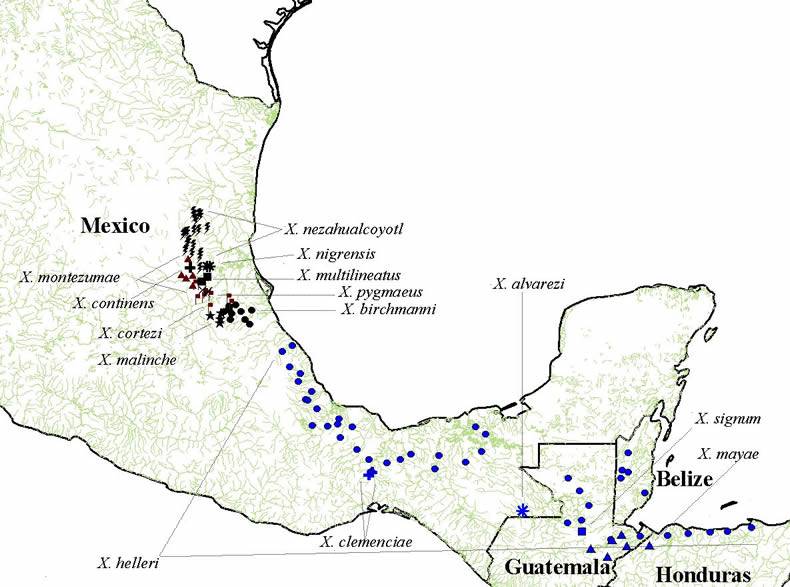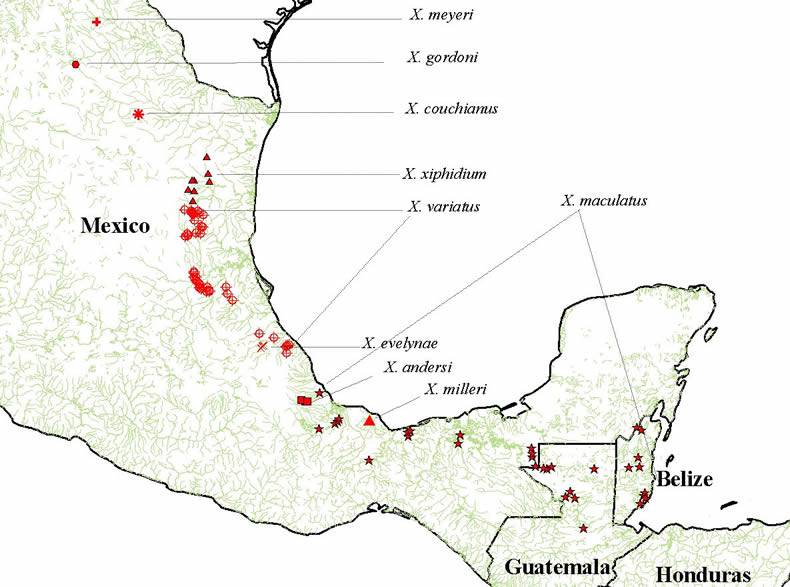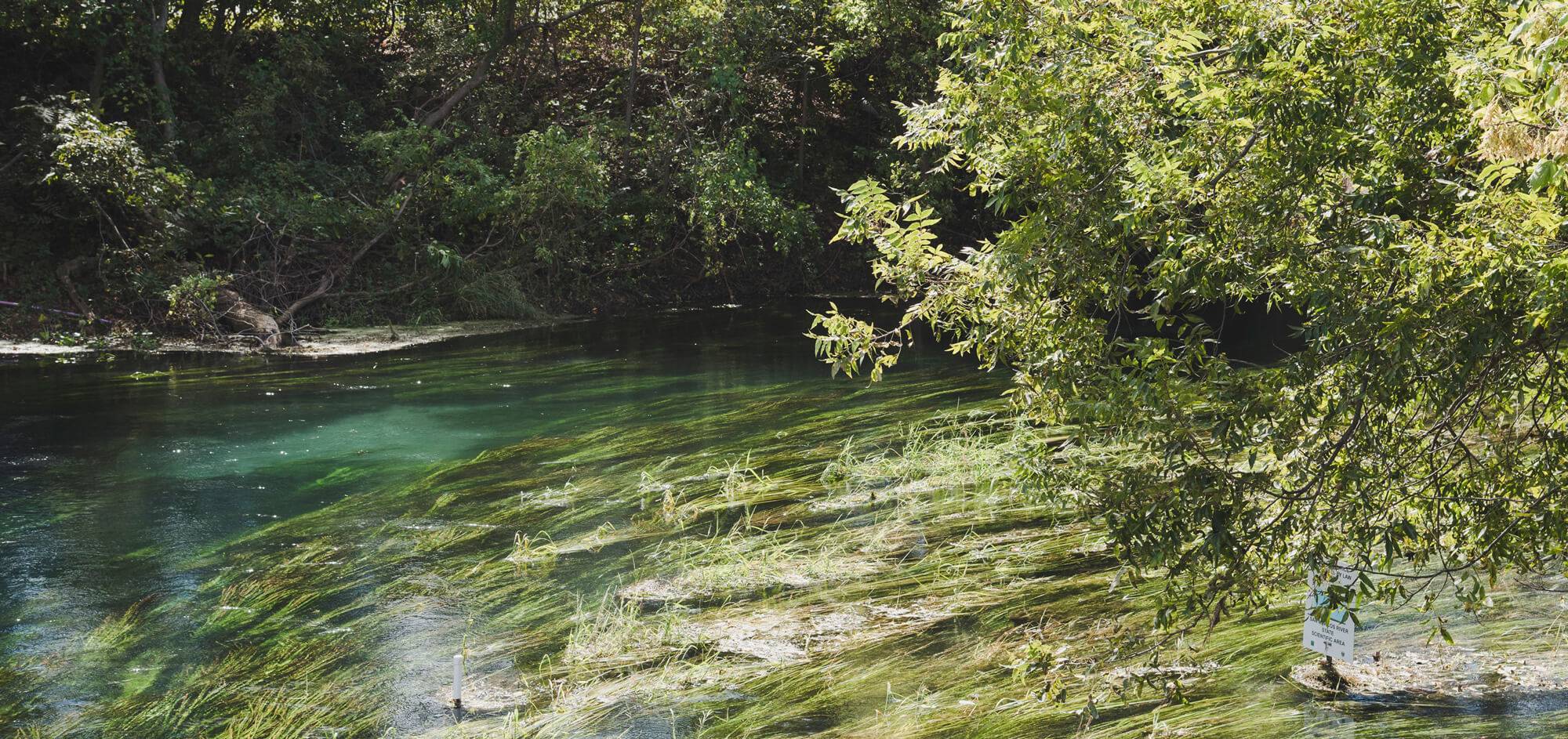Xiphophorus fishes naturally reside in Mexico, Guatemala, Belize and Honduras (see maps below). Most of these are found in freshwater drainages in eastern Mexico. Since Xiphophorus researchers oftentimes must travel and collect in this country, they need to follow the proper procedures to ensure legal compliance with the Mexican government.
Distribution and Collection
Collecting Fishes in Mexico

Necessary Steps In Brief:
Technically, applications need to be submitted to and approved by two distinct Mexican government agencies before you may collect. These are the following:
- requires a form entitled "Formato de Solicitud para la Expedicionde Permiso para Realizar Investigacion Cientifica por Extranjeros en Territorio Mexicano"
- Secretaría de Medio Ambiente y Recursos Naturales (SEMARNAT)
- requires form# INE-02-029-D, "Permiso especial de colecta científica de flora y fauna silvestre y otros recursos biológicos."
LUCKILY, you don't need to contact them directly if you are a US citizen. Instead, you can contact the OFFICE OF ENVIRONMENT, SCIENCE, AND TECHNOLOGY at the U.S. Embassy in Mexico
The permit process can take anywhere from four months to a year, so plan ahead. Also, the permit is comprised of approximately six pages and is printed in Spanish. Aside from obvious information, such as when you would want to travel, where you would want to go, and what fishes you would want to collect, you will need to write some additional sections and provide geographic maps and curriculum vitae. In addition, you will need letters from your department head and from at least one Mexican collaborator. You will also need to make arrangements to deposit samples at a Mexican museum or institution. If traveling by car or truck, you will need to provide license plate information as well. The permit process is quite detailed, but very important! Finally, a permit fee is required, but only after informal approval of your application.
If all goes well, you will have two permits in hand: one from the Secretaria de Agricultura, Ganaderia, Desarollo Rural, Pesca y Alimentacion (SAGARPA; Comision Nacional de Agricultura Y Pesca) and the other from Secretaría de Medio Ambiente y Recursos Naturales (SEMARNAT).
Finally, you must be aware of the laws of the country that the collected fish are going to. Oftentimes, there are strict policies regarding the importation of exotic species. In addition, museums may not accept samples if the proper domestic paperwork has not been filed. In the United States, for example, you must file a form with the U.S. Fish and Wildlife Service. You also must call ahead and make sure an agent will meet you at a specified time and border crossing. In addition, you must talk to the customs agents, as well as agents from the U.S. Department of Agriculture, who are usually at border checkpoints at all times.
In sum, be legal, be safe and . . .
Good luck in your quest for fishes!
Contributed by Steven Kazianis.



*Please note that the plotted collection points are approximate, based on manuscripts such as Rauchenberger et al., 1990, Rosen, 1960, Borowsky, 1984, and original species descriptions. One can also refer to Neodat II for museum collections, some of which have GPS coordinates.
